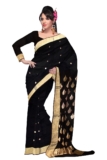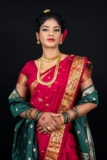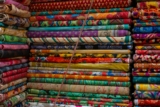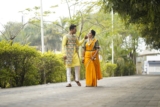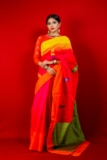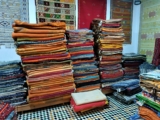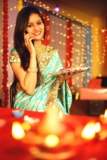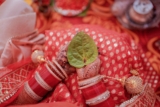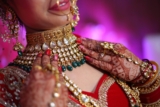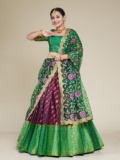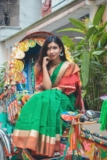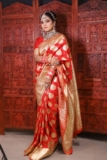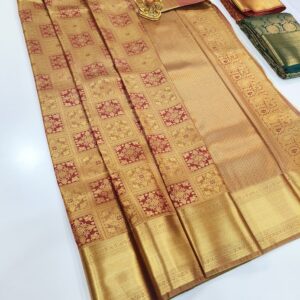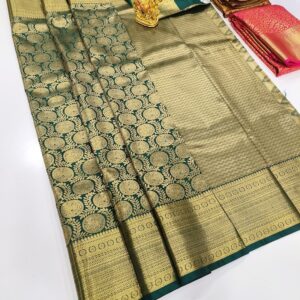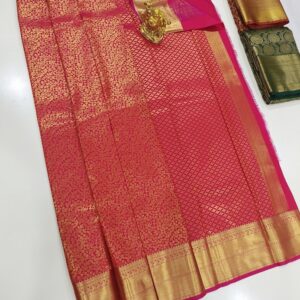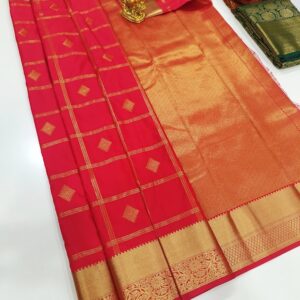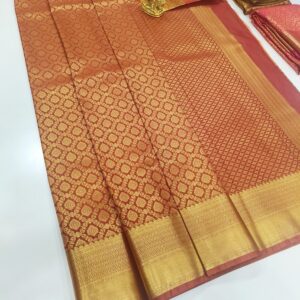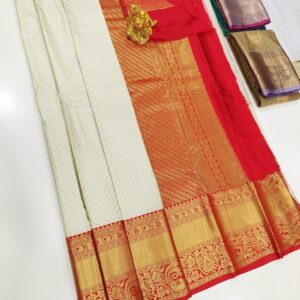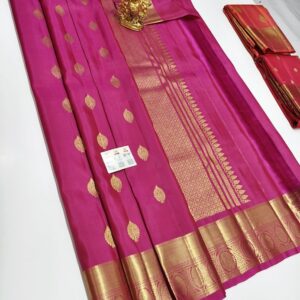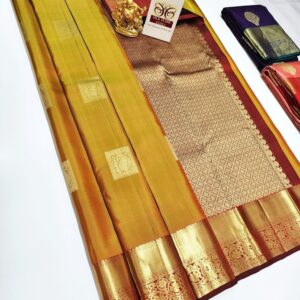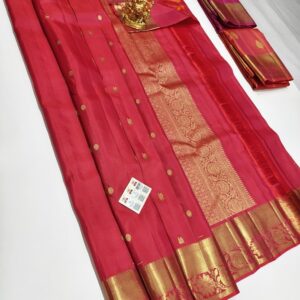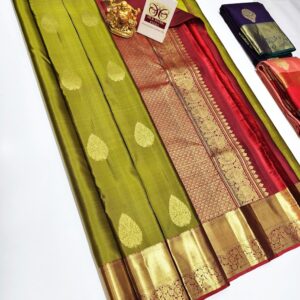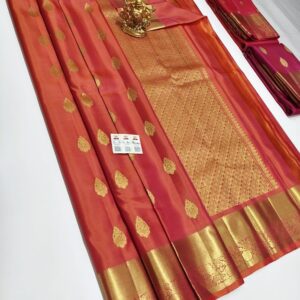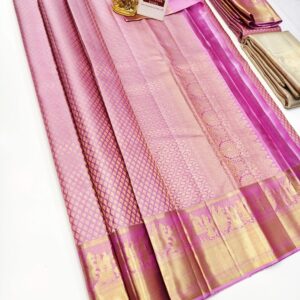Velvet sarees have made a glamorous comeback, becoming one of the most desired fashion trends of the season. Luxurious, elegant, and effortlessly royal, ...
In the world of Indian bridal fashion, trends come and go, but some traditions withstand the test of time. One such timeless treasure is the Kanchipuram silk ...
Introduction Sarees are timeless, elegant, and incredibly versatile, a true symbol of Indian heritage and grace. But when it comes to traveling, packing ...
Your engagement is one of the most cherished milestones of your life, a moment filled with joy, excitement, and celebration. Naturally, every bride-to-be ...
Holi, the festival of colors, is not just about playful splashes of gulal and joyous gatherings; it’s also the perfect time to flaunt your most colorful and ...
Sarees are more than just a garment, they are a reflection of India’s timeless heritage, grace, and femininity. For elderly women, sarees hold a deep ...
Diwali, the festival of lights, is not just about diyas, sweets, and celebrations, it’s also the perfect time to dress up, shine bright, and capture stunning ...
When it comes to traditional Indian attire, nothing captures the grace and grandeur of Indian culture quite like a Banarasi saree. Originating from the holy ...
Jewellery is more than just an accessory in India, it is an expression of heritage, artistry, and personal style. From everyday wear to bridal treasures, ...
Indian fashion is a vibrant tapestry of elegance, heritage, and timeless beauty. Among the most celebrated garments are the saree and the lehenga - two ...
The saree is one of the most timeless and versatile garments in fashion. Known for its elegance, grace, and adaptability, it has been reinvented countless ...
Ganesh Chaturthi is one of the most celebrated festivals in India, symbolizing new beginnings, prosperity, and joy. Families and communities come together to ...
- 1
- 2
- 3
- …
- 12
- Next Page »
User Deals: Ram Kumar
High Fancy Kanjivaram Silk Saree Gold Color w/ Blouse
 +91 9080459941
Whats App for Latest Sarees & Designs
+91 9080459941
Whats App for Latest Sarees & DesignsUnique Design High Fancy Kanjivaram Silk Saree Bottle Green Color w/ Blouse
 +91 9080459941
Whats App for Latest Sarees & Designs
+91 9080459941
Whats App for Latest Sarees & DesignsHigh Fancy Kanjivaram Silk Saree Pink Color w/ Blouse
 +91 9080459941
Whats App for Latest Sarees & Designs
+91 9080459941
Whats App for Latest Sarees & DesignsTraditional Design High Fancy Kanjivaram Silk Saree Orange Color w/ Blouse
 +91 9080459941
Whats App for Latest Sarees & Designs
+91 9080459941
Whats App for Latest Sarees & DesignsHigh Fancy Kanjivaram Silk Saree Apple Red Color w/ Blouse
 +91 9080459941
Whats App for Latest Sarees & Designs
+91 9080459941
Whats App for Latest Sarees & DesignsNew Design Kanchi Semi Silk Saree White Color w/ Blouse
 +91 9080459941
Whats App for Latest Sarees & Designs
+91 9080459941
Whats App for Latest Sarees & DesignsDifferent Design Pure Kanjivaram Fancy Silk Saree Magenta Color w/ Blouse
 +91 9080459941
Whats App for Latest Sarees & Designs
+91 9080459941
Whats App for Latest Sarees & DesignsPure Kanjivaram Fancy Silk Saree Mustard Yellow Color w/ Blouse
 +91 9080459941
Whats App for Latest Sarees & Designs
+91 9080459941
Whats App for Latest Sarees & DesignsNew Design Pure Kanjivaram Fancy Silk Saree Red Color w/ Blouse
 +91 9080459941
Whats App for Latest Sarees & Designs
+91 9080459941
Whats App for Latest Sarees & DesignsUnique Design Pure Kanjivaram Fancy Silk Saree Olive Green Color w/ Blouse
 +91 9080459941
Whats App for Latest Sarees & Designs
+91 9080459941
Whats App for Latest Sarees & DesignsTrendy Design Pure Kanjivaram Fancy Silk Saree Fanta Orange Color w/ Blouse
 +91 9080459941
Whats App for Latest Sarees & Designs
+91 9080459941
Whats App for Latest Sarees & DesignsDemond Flower Design Pure Kanjivaram Silk Saree Off White Color w/ Blouse
 +91 9080459941
Whats App for Latest Sarees & Designs
+91 9080459941
Whats App for Latest Sarees & DesignsAt kanchisilksarees.com you can buy original Kanchipuram Silk Sarees or you can visit our shop near Gandhi Road, Kanchipuram.
Get latest and trending kanchi silk sarees designs in your inbox.

